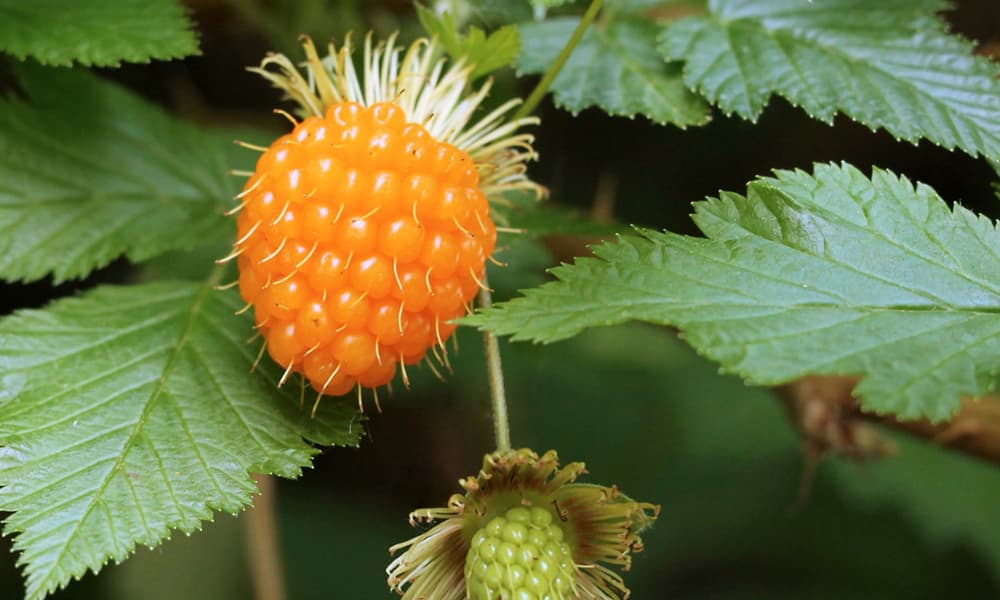News
Salmonberry (Rubus spectabilis)
We love to snack on salmonberry in our programs, but always remember to leave plenty for the birds and other wildlife that rely on this foodsource.

Also known as: Yetwánaý (Squamish), ǧúláli (Heiltsuk), ʔəlíluʔ (Klallam), and tca’a’xiwap’ut (Quileute)
We love to snack on salmonberry in our programs, but always remember to leave plenty for the birds and other wildlife that rely on this foodsource.
Identification:
Deciduous shrub, 1-4 m tall, with arching stems.The stems are often prickly in stages of new growth. Orange-brownish bark.
Flowers:
Deep pink and rose coloured flowers bloom February-March, and grow singly up to about 3 cm.
Fruits:
Large fruits ripen May-June, and resemble raspberries and vary in colour and taste depending on individual plant and location
Leaves:
Large green trifoliate, toothed leaf. Fold the top leaf down and flap its bottom two leaves – they look like a butterfly!
Ecology:
- Found in a wide range of habitats
- In wetland or riparian areas, it can be found in open areas, often after disturbance events
- Range is along western North America, from northwestern California to Alaska, between the Cascades and the coast
- Salmonberry can be found growing with Elderberry, sword ferns, evergreen huckleberry, and fireweed.
Bird and Pollinator Relationships:
Salmonberry is an important component of the ecosystem in its native habitat, it provides food for a number of mammals, birds and invertebrates.
Traditional Use, Food and Medicine:
Salmonberries were a popular plant among First Nations people as a food source. The berries were eaten fresh, as they are too juicy to dry into cakes for winter use. First to ripen in spring, they were often picked and served with oolichan grease at feasts. In spring, the sprouts were peeled and eaten raw with salmon meat or dried salmon spawn. Sprouts were harvested from April to early June, and could be tied together and pit cooked. Nuu-chah-nulth peoples would boil the leaves with fish as flavouring. An infusion of the roots was used to stimulate the appetite and promote weight gain. The bark has an astringent quality in the bark and leaves. Dried leaves were chewed to cure diarrhea and stomach upset. A tea infusion was administered to treat anemia, to shorten an overly long menstrual period and to ease labor pains. Salmonberry blooms and bushes indicate strong salmon runs and healthy salmon ecosystems.
Similar Species:
Blackberries, raspberries, huckleberries
Threats:
Threatened through connections to other animals and plants, but not currently listed as threatened.
Sources: https://www.japaneseknotweedkillers.com/salmonberry, https://mapping.uvic.ca/content/salmonberry, https://thenarwhal.ca/opinion-salmonberry-heiltsuk-first-nation-bc/, https://assets.website-files.com/5a0ca7f60d22aa0001465873/5d0a92567272360b45c64ac0_Salmonberry-TGG.pdf, https://www.leighjoseph.com/blog/salmonberry